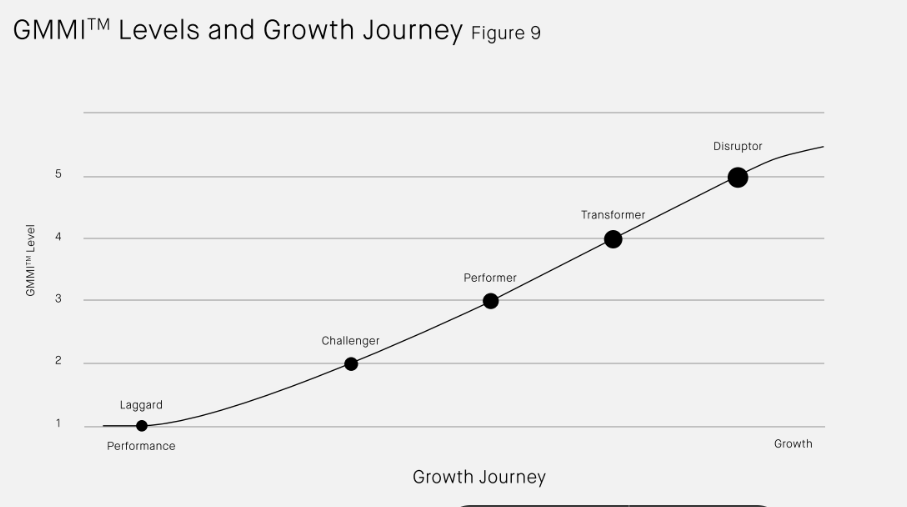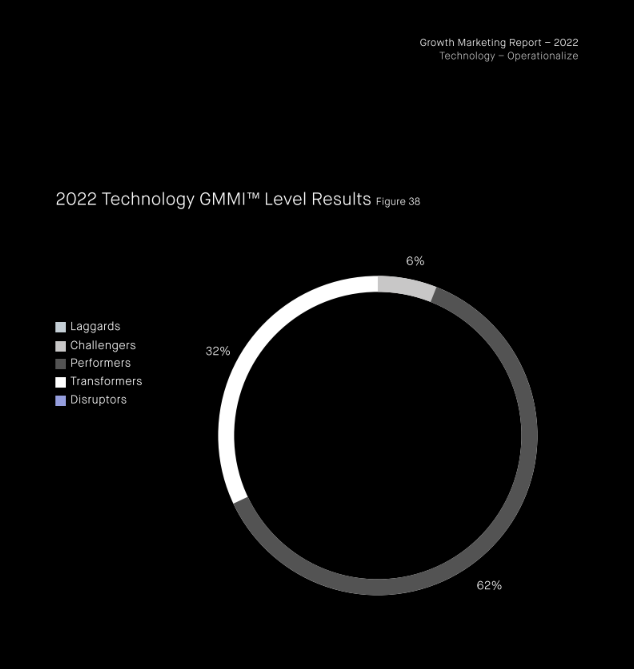The tech industry has been going through some challenges this year. Change is a constant in tech, and the cadence at which the industry continues to evolve is rapidly accelerating. Demands for real-time efficiency and effectiveness have many digital marketing teams scurrying to identify and solve problems with innovative solutions that provide the necessary value and education to sharply stand out among competitors. Below are a few challenges we at DEPT® have noted tech marketers face today:
- Effectively synthesizing (and accessing) data into actionable steps for real-time decisions.
- Uncovering the most effective channels to raise brand awareness and attract audiences.
- Providing value and education with relevant creative/content in a crowded marketplace.
- Securing a predictable and sustainable pipeline of new business opportunities through awareness and cultivation.
- Internal marketing teams that are siloed and lack clarity and alignment to high-level strategy.
So, what do tech brands need to do to cut through these difficulties and find a way forward towards sustainable growth?
Digital marketers in the technology sector have been focused on performance marketing – a “pay-for-measurable” results advertising approach. This singular focus has driven marketers’ use of mid- and bottom-funnel channels like conversion rate optimization, search engine optimization, and influencer marketing. As competition online has intensified since the onset of the pandemic, performance marketing alone is simply not enough to stand out and take over market share. Marketers today instead need to engage in growth marketing.
What is growth marketing?
Growth marketing is a new way of looking at marketing that involves a full-funnel strategy. DEPT® recently surveyed tech marketers about their growth marketing practices and philosophies. Roughly 40% of tech marketers understand the meaning of growth marketing, but an underwhelming 27% of respondents have adopted it within their organization.
Growth marketing combines middle- and bottom-funnel tactics like paid search, click rate optimization, paid social, and SEO, along with upper-funnel brand building activities like programmatic, mobile app advertising, and connected TV. It also requires the use of the three critical “growth drivers” (strategy and planning, analytics, and creative). But it’s not enough to just execute on these different activities – they must all function in complete alignment with each other. For a brand to reach its full potential, marketers must knock down all silos between different teams and budgets, and also tie back to broader business strategy, goals, and priorities.
DEPT® ’s 2022 Growth Marketing Report shows the results of the survey we conducted in February 2022 of 400 marketing leaders within four industries – technology, retail, financial services, and healthcare. This assessment measured how well these leaders have implemented a growth marketing approach within their companies. To score the results, we developed a custom measurement and ranking system called the DEPT® Growth Marketing Maturity Index™ (GMMI).
Our proprietary GMMI evaluates a tech brand based on six characteristics that respondents self-assess their capabilities within, and then calculates the brand’s marketing maturity level. There are five levels in the GMMI that range from Laggard (least mature) to Disruptor (most mature). Based on how a company scores in each of these different pillars in the assessment, they are then assigned one of five rankings.

Based on responses to our survey, the tech sector is made up primarily of Performers (62%) and Transformers (32%). You can think of Performers as “middle of the road” – brands that have an established performance marketing practice but need to make improvements quickly or else face diminishing returns on their marketing investment. Transformers are a bit more advanced and have started to implement some growth marketing measures, like outlining a formal, full-funnel plan with goals tying back to the broader business vision and strategy. Our assessment showed that none of our respondents in the tech sector scored at either extreme of the growth marketing spectrum.

Technology marketers’ path to growth marketing
Let’s run through the five challenges we listed earlier in this blog and how tech marketers can address them to begin advancing their growth marketing practice.
#1 – Leverage data to make better decisions.
With siloes across teams and strategies, tech marketers must figure out how to collect and manage the right data, while swiftly and effectively synthesizing that data into actionable steps to make real-time decisions.
But it’s not just that – you also have to track the right type of metrics. Technology marketers that value growth metrics like customer lifetime value, market share gains, and brand equity will be able to more effectively manage their resources and increase profitability. These metrics will determine the value of customer relationships with a brand over the long-term, rather than just short-sighted metrics like clicks and conversions. With the right process, platforms, and analytics professionals in place, tech marketers will be able to use data to make better decisions, build closer customer relationships, and power more successful campaigns.
#2 – Manage channel effectiveness to raise awareness and attract new audiences.
Striking the appropriate channel mix is both an art and a science. Our survey indicated that tech marketers under-prioritize certain activities in favor of others that may not be well-suited for growth in the long-term. For instance, they are over-prioritizing their investment in CRO and SEO, which shows us that they’re more focused on the mid- and bottom-funnel. This may seem like a cost-effective way to drive conversions, especially when supported by influencer marketing, eCommerce, and organic social media, which were all well-balanced investments. But, this is only a quick fix and performance will plateau, meaning that technology companies will soon be searching for new customers to fill their pipeline.
While data shows that most respondents bet big on their upper-funnel programmatic activities, tech marketers should start to diversify and experiment in other unoccupied activities like connected TV/over the top media, out of home/digital out of home, AdTech, mobile app advertising, and emerging media to begin expanding their brand awareness and exposure. By doing so, these brands can identify and engage new customers while also maintaining a presence among existing and returning customers, keeping their customer pipeline fuller than it would be otherwise. We’re not saying be everywhere, rather be everywhere your customers are and the only way you can do that is by looking at the data.
It’s critical that tech companies provide a seamless, integrated experience across each customer touchpoint at every stage of the funnel. We recommend marketers take advantage of the data and analytics available to continuously optimize the customer experiences in an omni-channel environment.
#3 – Surprise and delight. Stand out among the competition.
For tech companies to remain competitive, marketers must provide value to customers. That value comes in the form of convenience, solutions, quality and/or price of your product. In addition to marketing these features, advertising content should also educate customers on the unique benefits, making your brand the preferred choice in a crowded marketplace.
Tech marketers should rely on data to help them prioritize where to allocate their resources and how to level up and personalize content that moves the needle. A diverse channel mix supports a full-funnel approach that uses brand-forward messaging and product-specific promotions to engage new audiences, all while using impactful creative. Advertising content that performs well for tech marketers blends education and entertainment to provide customers with a holistic perspective of the brand. Educational content empowers the customer to make informed decisions based on knowledge from a reliable and trustworthy source. Entertaining content expresses relatability – the brand understands its customers’ needs, wants, and inspirations. Advertising that combines these two styles will build trust and connection between the brand and consumers.
#4 – Fill a pipeline for sustainable growth.
Tech marketers need to focus less on the quick win and more on cultivating audiences over time so that they become loyal repeat customers. Those that are not using growth marketing efforts may see short-term results that will soon plateau. Until tech marketers expand their pipeline to identify, engage, and convert customers at every stage of the marketing funnel, success will be limited and short lived.
Instead, tech marketers can build awareness among new audiences in the upper-funnel while also nurturing customers at the mid- and lower-funnel stages of their journey with growth marketing. You can generate stronger leads and better serve those leads with content that engages and eventually converts them to customers by paving the right pathway. Tech marketers need to evaluate each customer with the intent of connecting data, strategies, messaging, and advertising channel mix to the customer’s potential for future revenue. Better targeting means you provide customers with relevant content at the exact moment that it will deliver the biggest impact.
#5 – Elevate your strategy by removing organizational silos.
Many tech marketing teams work in silos and as a result, have less insight and connection to higher-level business strategy. A strong relationship with the C-suite is critical to marketing’s success. According to our report, nearly half (48%) of technology marketers had an “average” score when it came to their management buy-in.
Tech marketers should engage executives in the digital marketing planning process to better align their initiatives with overall company ideas, goals, and strategies. The more excited and engaged your C-suite is, the more leadership and budgetary support you’ll receive from other departments within the company. One way technology marketers can do that is by building a more strategic plan that is connected to higher-level business objectives, is consistently optimized over time, and can be proven by growth metrics.
When competition is tight, sticking with the same approach isn’t going to cut it. Technology marketers know that with the right strategy and creative, positive performance will follow…until it doesn’t. By taking a more holistic, full-funnel approach, growth marketing opens up a whole new world of opportunities. The information presented in this blog is just a sampling of the learnings we uncovered through our survey. Download the full 2022 DEPT® Growth Marketing Report for a deeper dive into our learnings and what these insights mean for your brand.





